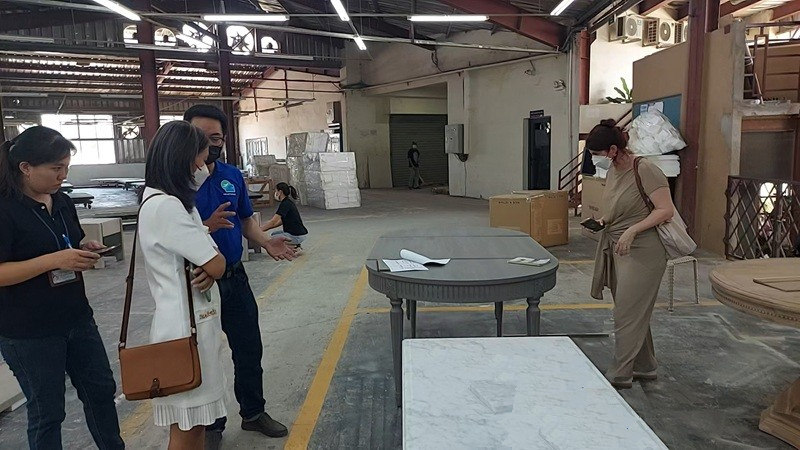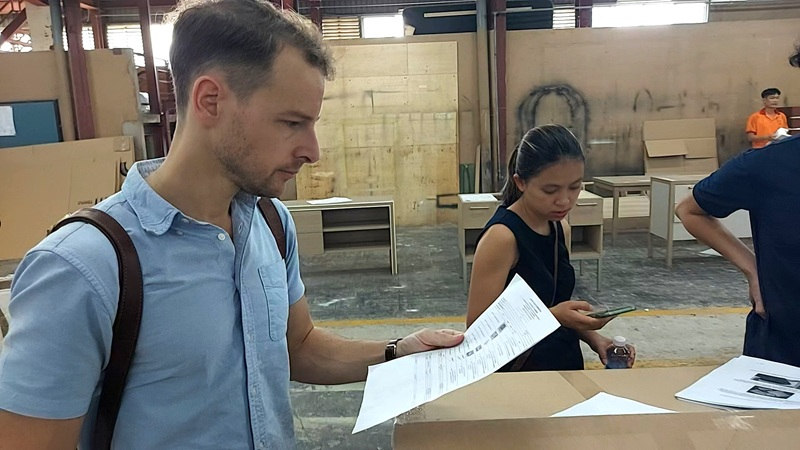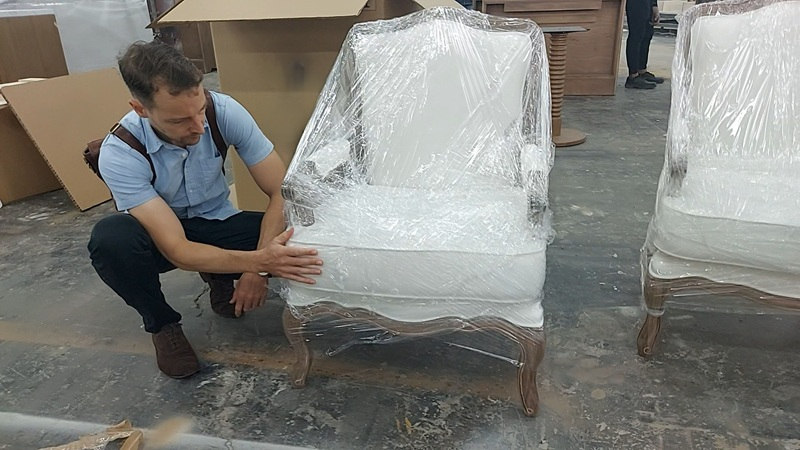Vietnam has become a global hub for furniture manufacturing, attracting businesses with its cost-effective production, skilled labor force, and access to high-quality raw materials.
This guide provides a detailed overview of the end-to-end process of manufacturing furniture products in Vietnam, from identifying suitable factories to ensuring top-notch quality control.
Factory Search
Identifying Suitable Manufacturing Zones
Vietnam’s manufacturing landscape is concentrated in specific regions, each offering unique advantages:
- Southern Vietnam: Areas such as Ho Chi Minh City, Binh Duong, Dong Nai, and Long An are renowned for their furniture manufacturing clusters. These zones host a mix of small- and large-scale factories, providing diverse options for businesses.
- Northern Vietnam: Provinces like Hai Phong, Bac Ninh, and Hanoi are emerging as competitive manufacturing hubs with increasing infrastructure and export capacity.
- Central Vietnam: Locations such as Da Nang and Quang Nam are growing due to lower operational costs and proximity to ports.
Choosing a manufacturing zone depends on factors like proximity to ports, access to skilled labor, and the type of furniture products being produced (e.g., wooden furniture vs. upholstered items).
Utilizing Networks for Recommendations
Tapping into industry networks is one of the most effective ways to find reputable manufacturers:
- Trade Associations: Organizations such as the Vietnam Chamber of Commerce and Industry (VCCI) or the Handicraft and Wood Industry Association of Ho Chi Minh City (HAWA) can provide reliable factory recommendations.
- Trade Shows: Events like VIFA-EXPO and VietnamWood allow direct interactions with manufacturers, showcasing their capabilities and product offerings.
- Professional Sourcing Agents: Local sourcing experts can help identify factories that align with your specific requirements.
Due Diligence and Vetting
Thorough due diligence is essential to ensure you partner with a reliable manufacturer:

- Key Vetting Factors: Evaluate production capacity, technology used, labor practices, and compliance with international standards (e.g., FSC certification for sustainable wood sourcing).
- Factory Visits: Conduct in-person visits to assess production facilities, working conditions, and quality control measures. Observing day-to-day operations offers a clearer picture of the factory’s reliability and professionalism.
Product Development Process
Collaborating with Designers and Engineers
Effective collaboration between your team and the manufacturer is critical for successful product development:
- Concept to Blueprint: Share detailed design specifications, including dimensions, materials, finishes, and functionality.
- Local Expertise: Leverage the manufacturer’s engineering team for advice on cost-efficient materials and production techniques that align with your design vision.
Prototyping and Feedback Loops
Before scaling production, prototypes are indispensable:
- Prototype Creation: Manufacturers typically create a prototype based on your design. This initial model serves as a tangible representation of the final product.
- Feedback Iterations: Review the prototype thoroughly for design and functionality. Provide clear feedback to ensure the final product meets your expectations. Multiple iterations may be necessary for refinement.
Production Phase
Material Sourcing
- Domestic vs. Imported Materials: Vietnam offers abundant domestic resources, such as acacia, rubberwood, and eucalyptus, suitable for furniture production. However, higher-end products may require imported materials like oak or walnut.
- Sustainability: Partner with factories that source certified sustainable materials (e.g., FSC-certified wood) to meet global environmental standards.
Production Monitoring
Active monitoring during production ensures timelines and quality standards are maintained:

- In-House Monitoring: Assign a dedicated project manager or representative to oversee the production schedule and address any issues promptly.
- Third-Party Oversight: Engage third-party services for periodic production checks to ensure alignment with agreed specifications.
- Quality Control (QC)
Implementing Quality Control Measures
Quality assurance should be a continuous process integrated at every stage of manufacturing:
- Checkpoints: Establish quality control checkpoints at key production stages, such as material preparation, assembly, and finishing.
- Inspection Protocols: Develop detailed inspection protocols, including tolerance levels for measurements, finish quality, and functional tests.
Final Inspection Processes
Before shipping, conduct a thorough final inspection to verify product quality:
- Internal Inspections: Manufacturers often perform their own final inspections. However, it is crucial to cross-check these results.
- Third-Party Inspections: Independent quality control services like SGS, Bureau Veritas, or Intertek can provide unbiased reports on product readiness and compliance with international standards.
- Packaging Review: Ensure packaging meets export requirements to prevent damage during transit.
Logistics and Export
Shipping and Freight Forwarding
Vietnam’s proximity to major ports like Cat Lai (Ho Chi Minh City) and Hai Phong makes it an advantageous location for global shipping:
- Shipping Documentation: Ensure all necessary export documents, such as commercial invoices, packing lists, and certificates of origin, are accurately prepared.
- Freight Forwarders: Partner with experienced freight forwarders to streamline the shipping process and handle customs clearance efficiently.
Managing Lead Times
Set realistic timelines for production and shipping:
- Production Timeline: Factor in prototype iterations, production, and quality inspections.
- Shipping Timeline: Account for potential delays in customs clearance or port congestion, especially during peak seasons.
Building Long-Term Partnerships
Nurturing Relationships with Manufacturers
Strong, long-term relationships with manufacturers can enhance trust and improve collaboration:
- Regular Communication: Maintain open and consistent communication to address issues promptly and align on expectations.
- Feedback Mechanisms: Share feedback regularly to foster continuous improvement in product quality and service.
Diversifying Manufacturing Partners
Avoid over-reliance on a single supplier by working with multiple factories. This approach mitigates risks of disruptions and offers flexibility for scaling production.
Vietnam offers unparalleled opportunities for manufacturing furniture products, but success depends on careful planning, thorough due diligence, and proactive quality control. By leveraging the expertise of local manufacturers, building strong partnerships, and ensuring strict adherence to quality standards, businesses can maximize the advantages of manufacturing in Vietnam while minimizing risks. Whether you’re a startup or an established brand, this A-Z guide provides a solid foundation for successful operations in Vietnam’s thriving furniture industry.



